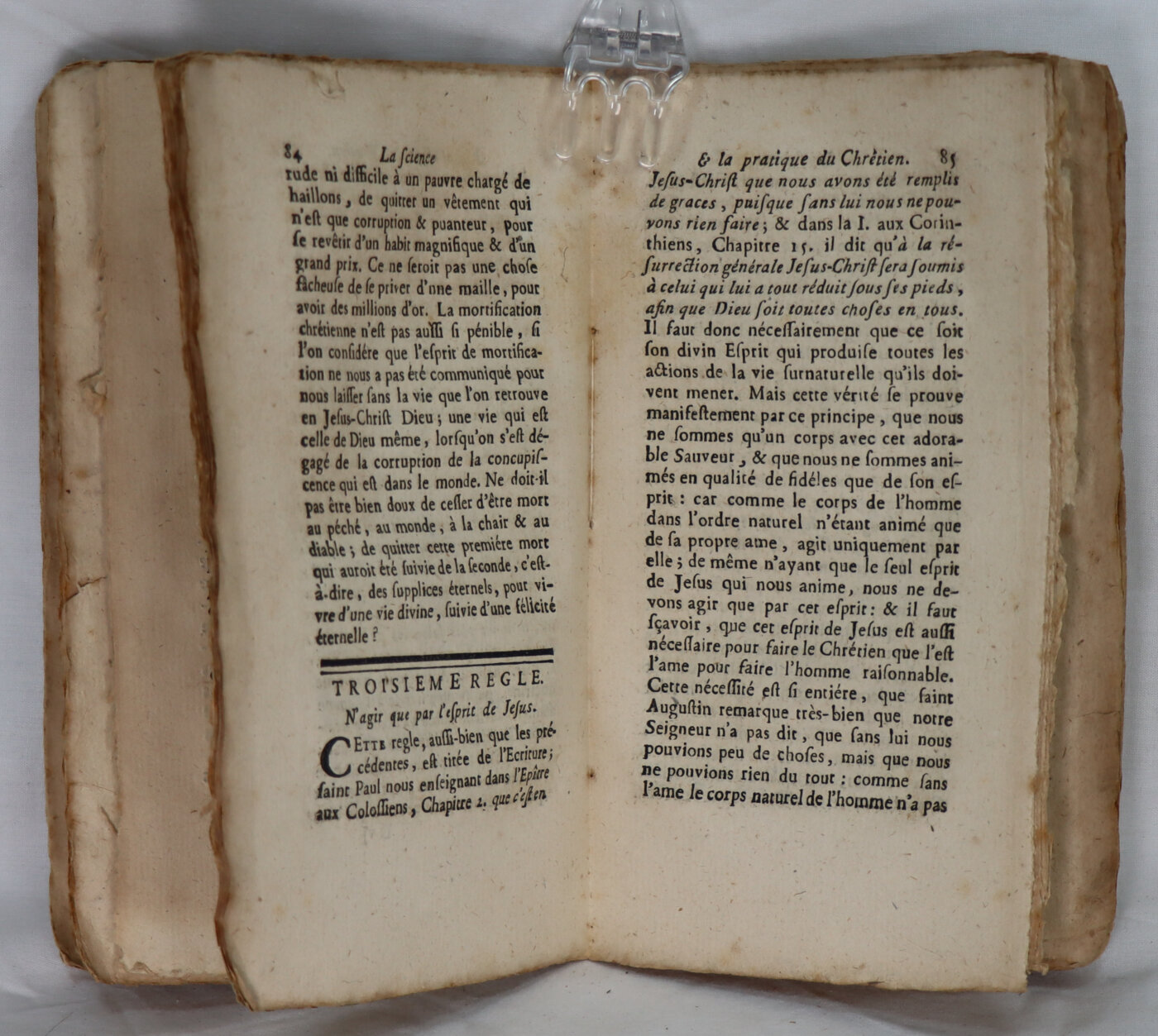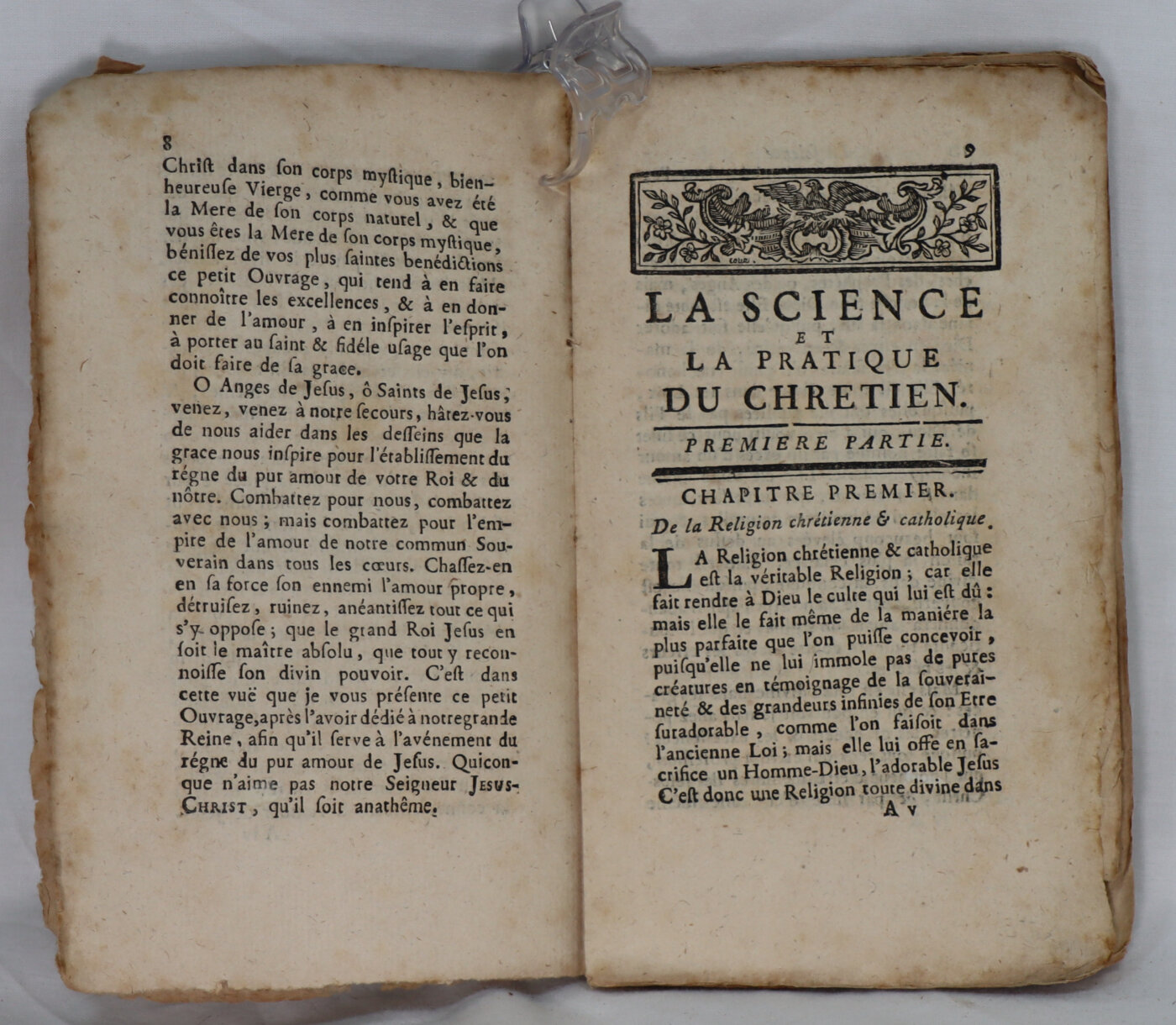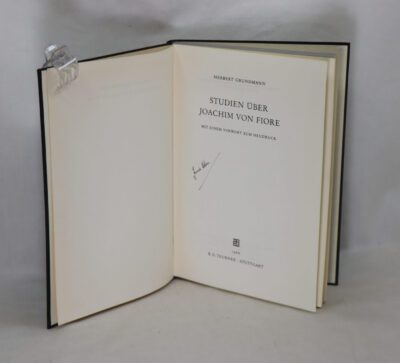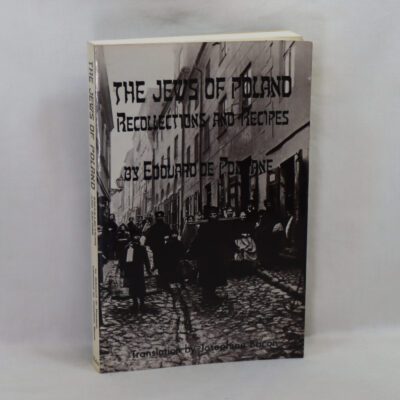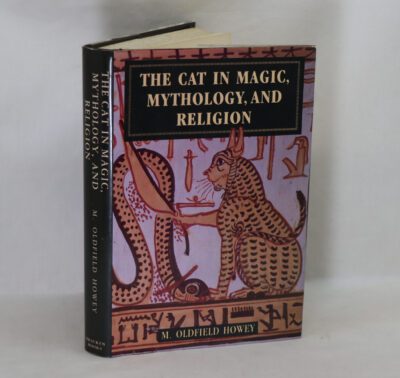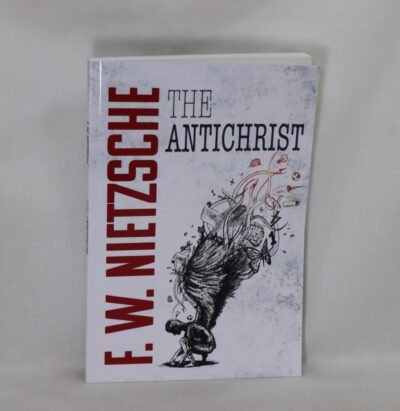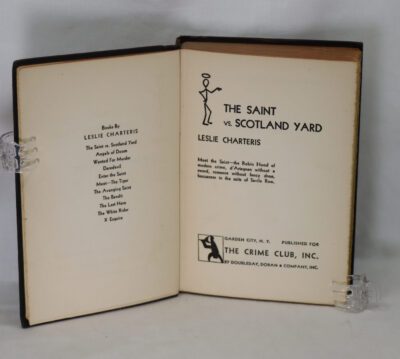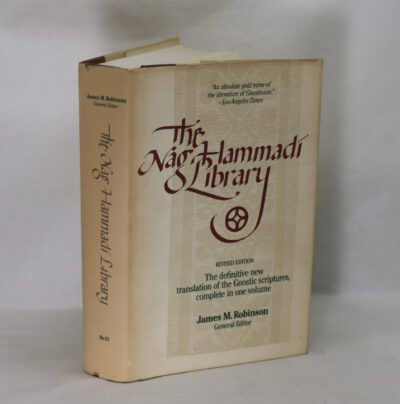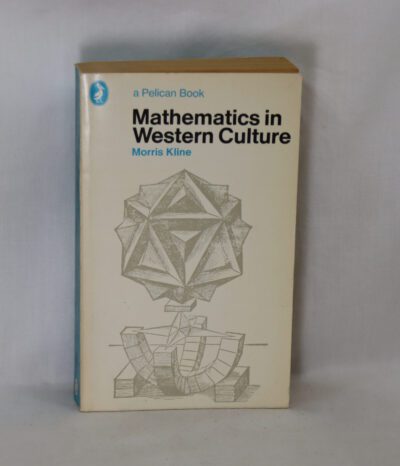Science et Pratique Du Cherien.
By Henri-Marie Boudon
Printed: 1773
Publisher: Chez Claude Herissant. Rue Notre-Dame,Paris
Edition: Nouvelle edition
| Dimensions | 10 × 17 × 1 cm |
|---|---|
| Language |
Language: French
Size (cminches): 10 x 17 x 1
Condition: Very good (See explanation of ratings)
Item information
Description
Buff card binding. 133 pages.
F.B.A. provides an in-depth photographic presentation of this item to stimulate your feeling and touch. More traditional book descriptions are immediately available
Note: This book carries the £5.00 discount to those that subscribe to the F.B.A. mailing list.
A fine work in its original paper printer’s wrapping. This is a well kept insert printed in 1773 which due to societal unrest was never bound into a formal book. Obviously, such could be currently done though it is more appropriate if this learned Christian work is boxed.
The French Revolution was a period of political and societal change in France that began with the Estates General of 1789, and ended with the coup of 18 Brumaire in November 1799 and the formation of the French Consulate. Many of its ideas are considered fundamental principles of liberal democracy, while its values and institutions remain central to modern French political discourse.
Its causes are generally agreed to be a combination of social, political and economic factors, which the Ancien Régime proved unable to manage. A financial crisis and widespread social distress led in May 1789 to the convocation of the Estates General, which was converted into a National Assembly in June. The Storming of the Bastille on 14 July led to a series of radical measures by the Assembly, among them the abolition of feudalism, state control over the Catholic Church in France, and a declaration of rights.
The next three years were dominated by the struggle for political control, exacerbated by economic depression. Military defeats following the outbreak of the French Revolutionary Wars in April 1792 resulted in the insurrection of 10 August 1792. The monarchy was abolished and replaced by the French First Republic in September, while Louis XVI was executed in January 1793.
After another revolt in June 1793, the constitution was suspended and effective political power passed from the National Convention to the Committee of Public Safety. About 16,000 people were executed in a Reign of Terror, which ended in July 1794. Weakened by external threats and internal opposition, the Republic was replaced in 1795 by the Directory. Four years later in 1799, the Consulate seized power in a military coup led by Napoleon Bonaparte. This is generally seen as marking the end of the Revolutionary period.
Henri-Marie Boudon (14 January 1624 – 31 August 1702) was a 17th-century Roman Catholic French abbot and spiritual author.
Boudon was born in La Fère in Picardy to Jean and Antoinette Jourdin
Boudon. His father was lieutenant of the citadel. After 15 years of childless marriage his mother prayed for a child, which prayers became only more intense with the death of their first born shortly after birth. The town of Liesse-Notre-Dame is situated about 28 miles (45 km) northwest of Reims. Liesse-Notre-Dame (Our Lady of Joy) is a center of Marian pilgrimage, and was a favorite shrine of Princess Henrietta Maria of France. On her way to Liesse, in company with her mother, Marie de’ Medici, and sister-in-law, Anne of Austria, she happened to pass through La Fère on the day of the infant Boudon’s christening. The princess agreed to be the child’s godmother and he was baptized Henri-Marie. Not long after his christening, his parents made a pilgrimage to Liesse, where his mother dedicated the child to Mary, Queen of Angels and invoked her protection of him. His father died shortly thereafter, and his mother soon remarried. At the age of eleven Henri-Marie was sent to attend the Jesuit college at Rouen. Later he studied at the Sorbonne. He was ordained in January, 1655. Boudon served as Archdeacon of Evreux and given with the authority of Vicar-General. During his visitations to various ecclesiastical sites, the Archdeacon was particularly dismayed at the deplorable conditions he found in many domestic chapels of the chateaux of the privileged. His criticism was not well-received and made many enemies, as did his efforts to reform a disinterested and self-indulgent clergy. Boudon was a key figure in the French school of spirituality. A recurring theme in Boudon’s work, characteristic of the French school, was the idea that the search for God requires detachment from all creatures. “God Alone” was his motto. His book Dieu seul: le Saint esclavage de l’admirable Mère de Dieu, (Only God, the Holy Slavery of the admirable Mother of God) was praised warmly by Jacques-Bénigne Bossuet, and was a key influence on Saint Louis de Montfort.
Want to know more about this item?

Related products
Share this Page with a friend

